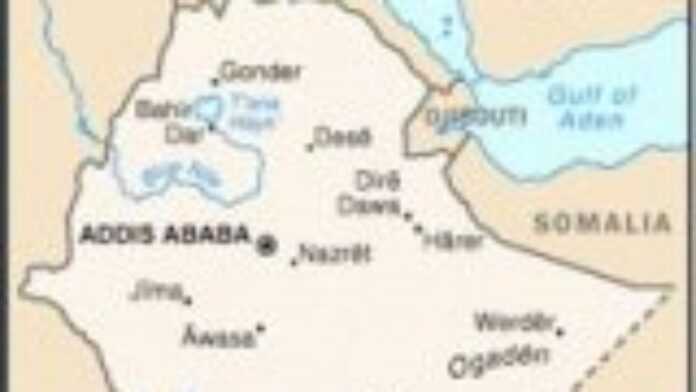
The government of Ethiopia has moved to debunk claims by a US-funded Famine Early Warning System that has claimed that the majority of Ethiopians are starving and in dire need of food. Ethiopia has been extremely sensitive to images showing its people as starving since the famine of 1984-5 and have condemned any further portrayal of such negativity. The FEWS claims come in the backdrop of another report from IFPRI which shows Ethiopia in a distant sixth position on the Sub-Saharan Africa hunger index.
Famine Early Warning System (FEWS) warned of increased hunger in parts of Ethiopia in the coming months of 2010. In Sept. 2009, the UN’s World Food Programme (WFP) said more than 20 million people in the Horn of Africa needed food aid because of two years of poor rainfall.
FEWS projections have shown that parts of the country in the extreme east, north-east and south-west would be badly hit between January and March 2010. Some 14 million people in the region were said to need food aid last year.
This comes in the backdrop of a 2009 Global Hunger Index released by the International Food Policy Research Institute (IFPRI) which illustrates that since 1990 the global hunger levels have declined by less than 25 percent: 13 per cent for Sub-Saharan Africa and 40 per cent for Southeast Asia and Latin America and the Caribbean.
Ethiopia’s Disaster Prevention Minister Mikitu Kassa has said that the country’s population is not largely starving, because the government was helping those hit by the drought. “It is baseless, it is contrary to the situation on the ground. The government is taking action to mitigate the problems,” Kassa is quoted.
The 2009 IFPRI Global Hunger Index released by the International Food Policy Research Institute (IFPRI) revealed that six countries incuding, Ethiopia, Chad, Sierra Leone, Eritrea, Burundi and The Democratic Republic of Congo were burdened by alarming levels of hunger. The Democratic Republic of Congo scored the worst, Ethiopia ranked sixth.
Although the Ethiopian government has admitted that nearly 6 million people were currently getting food aid it also argues that “in the Ethiopian context, there is no hunger, no famine” and that the situation was not as bad as in recent years. The United Nations has already said it is aiming to feed 20 million people in East Africa over the next six months.
East Africa as a whole has been hit with severe droughts with Somalia most hit, after the failure of both rainy seasons in 2009. Aid agency Oxfam said Somalia’s drought was the worst for 20 years, and November rainfall was less than 5% of normal in parts of Kenya and Ethiopia. According to the Famine Early Warning System, high food prices, poor livestock production and low agricultural wages will lead to increased hunger.
Conversely, the IFPRI report showed that the high rates of hunger are strongly linked to gender inequalities, especially in terms of literacy and access to education, while indicating that the most vulnerable countries are were those seriously affected by the global economic downturn. “Low-income countries are being hurt by the food and financial crises,” said Klaus von Grebmer, IFPRI communications director and head of the team that filed the report.
Ethiopian government sources, last year, claimed that gross shortages in food aid had led to a reduction of food ration quota of 15 kilogrammes of cereals per month per beneficiary family to 10 kilogrammes.
An appeal by the Ethiopian government for 450, 611 metric tonnes of food assistance to feed a target group of 4.9 million people until the end of 2009
had yielded only 274,611 metric tonnes in August, leaving a shortfall of 176,000 metric tonnes of food, according to the Disaster Risk Management and Food Security Sector (DRMFSS) of Ethiopia.

